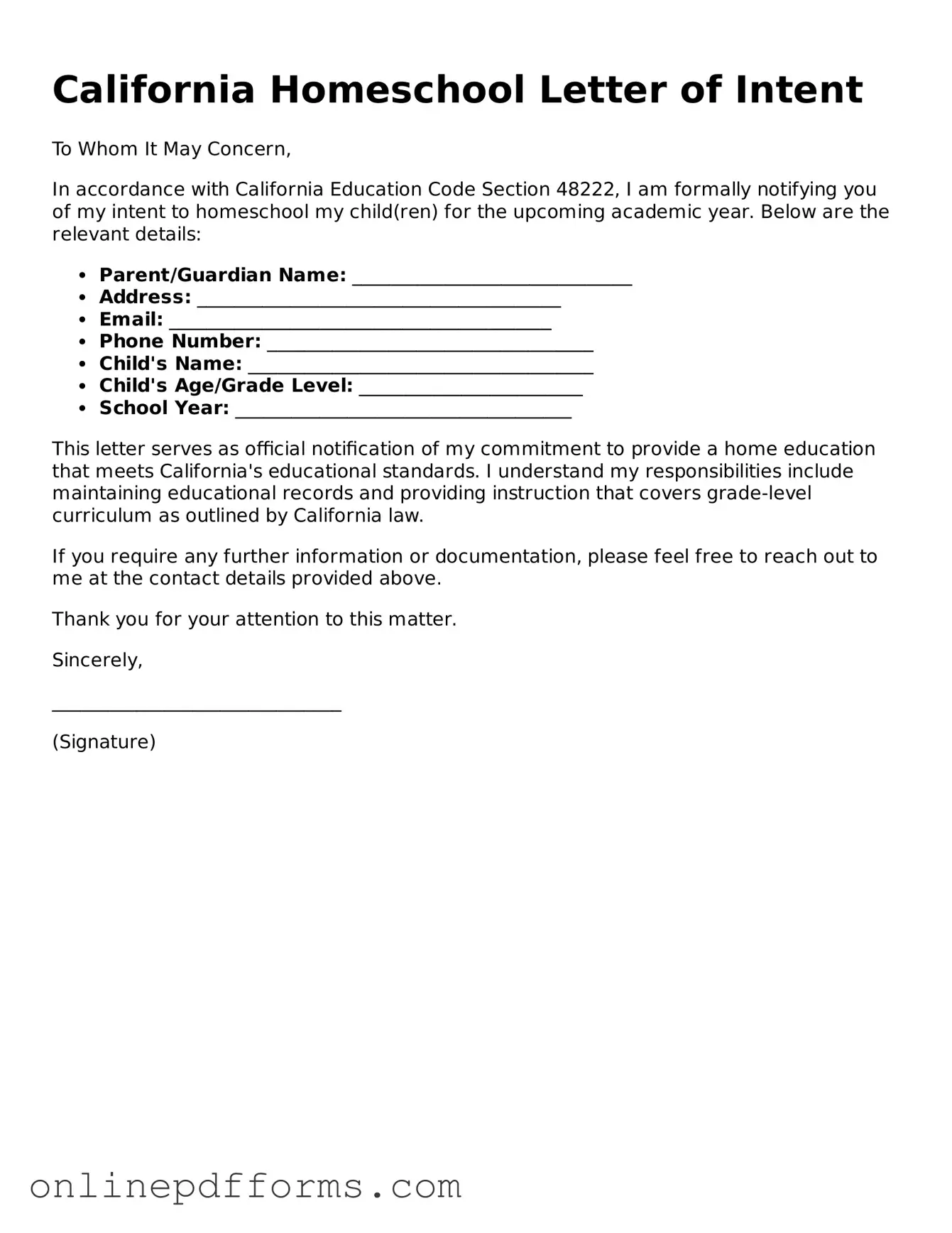The California Homeschool Letter of Intent form bears resemblance to the Notice of Intent to Homeschool, which is a document used in several states. This notice serves as a formal declaration to local educational authorities that a parent intends to educate their child at home. Similar to the California form, it requires parents to provide basic information about the child and the educational plan. Both documents aim to ensure that the educational needs of the child are being met while complying with state regulations.
Another document that aligns closely with the Homeschool Letter of Intent is the Private School Affidavit. In California, parents who choose to homeschool often file this affidavit, which notifies the state that they are operating a private school in their home. Like the Letter of Intent, the Private School Affidavit includes details about the school, such as its name, address, and the number of students enrolled. Both documents serve as a means of formal communication with the state regarding educational choices.
The Individualized Education Program (IEP) also shares similarities with the Homeschool Letter of Intent, particularly for families who are homeschooling children with special needs. An IEP outlines specific educational goals and services tailored to a child's unique requirements. While the Letter of Intent indicates a commitment to homeschooling, the IEP details how the educational plan will accommodate the child's needs. Both documents reflect a commitment to providing a quality education, though they serve different purposes within the educational framework.
The Enrollment Form for a Private School is another document that parallels the Homeschool Letter of Intent. This form is used by private institutions to gather essential information from families enrolling their children. Like the Letter of Intent, it collects data such as the child's name, age, and the educational program being pursued. Both documents play a crucial role in establishing a clear understanding of the educational environment and ensuring compliance with state regulations.
The Curriculum Plan, often required by some states, also has a connection to the Homeschool Letter of Intent. This document outlines the subjects and materials that will be used throughout the academic year. While the Letter of Intent serves as a notification of intent to homeschool, the Curriculum Plan provides a detailed roadmap for the educational journey. Both documents emphasize the importance of planning and accountability in the homeschooling process.
Finally, the Annual Assessment Report is another relevant document that aligns with the California Homeschool Letter of Intent. This report is typically required to demonstrate that a child is progressing academically while being homeschooled. Similar to the Letter of Intent, which establishes the intent to educate at home, the Annual Assessment Report provides evidence of educational outcomes. Both documents underscore the commitment of parents to ensure that their children receive a comprehensive education, adhering to state educational standards.
